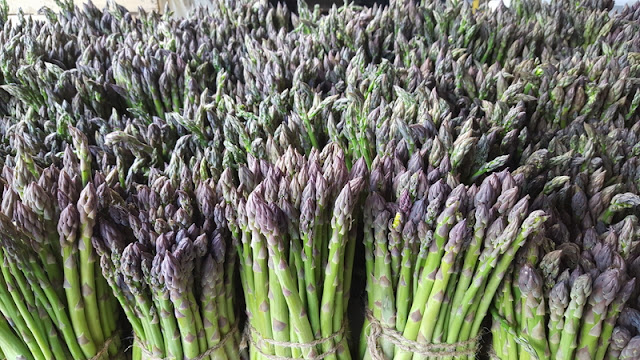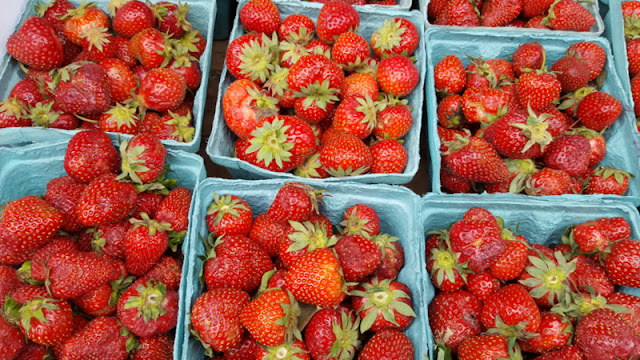Shouldn’t hybrid fruit have the best attributes of their parents?
That was my thought when I tried Thomcord table grapes, a hybrid developed in the 1980s by California grape breeders (and reportedly tinkered with over the next two decades).
This exotic hybrid is the offspring of two extremely common grapes. Thompson grapes are the world’s most popular snacking and raisin variety. Concord grapes, gorgeously purple, are the mainstay of PB&J grape jam, grape juice, cut-with-a-scissors cut-with-scissors sweet kosher wine, and “grape” in whatever candies and soda that choose natural alternatives to blue dye and synthetic flavorings.
Obviously missing on Concord’s honor roll: eating out of hand raw, aka snacking. Concord grapes are not only strikingly attractive, they’re fabulously fragrant and very flavorful. But Concords also have thick skins and pits. I’ve eaten them at farmer’s markets and in the backyards of New Yorkers who are lucky of them to have them growing “wild” (or more likely, planted by the person who lived in their house before them). They’re fragile and usually susceptible to blight and consequently expensive.
The obvious goal: make the gorgeous but temperamental Concord as practical and saleable as the Thompson. Here's one account of the Thomcord's origin story:
What are Thomcords? The tastiest grapes you’ve never heard of. Like Concord grapes, they’re juicier and more intensely grape-flavored than the red or green grapes you can buy year-round. But Concords have small, crunchy seeds, which may explain why they often end up as grape juice or jelly. Enter USDA’s grape-breeding scientists. In 1983, they crossed Thompson (seedless green) grapes with Concords…then spent nearly two decades fine-tuning the hybrid. The result: the seedless sweetness of a green grape with the plump, grapey flesh of a Concord.The Thomcord were certainly gorgeous - as plump and grapey-fleshed as promised.
And they were indeed seedless as well. And their skin was not as tough as the Concord's.
But -- and perhaps this could explain the nearly two decades of tinkering, though not its termination -- Thomcord grapes tasted terrible!
It was as if flavor somehow got dropped from the breeder's checklist.
The heady, winy complexity of the Concord grape - the attribute that caused my friend Jen to declare that "Concord grapes make your taste buds sing" - was flattened out, leaving only a random grape with a weird aftertaste.
What a disappointment! This practical, shippable, saleable, affordable grape didn't even measure up to the simple, sweet joys of its other parent, the Thompson.
I had no reason to snack on the carton of Thomson grapes, so I sought redemption via my go-to method of bringing out the best in substandard fruit: roasting.
These Thomcord grapes might have been the best-looking fruit I have ever subjected to heat therapy: candidates for caramelization typically include the withered and blemished. But these guys needed something drastic to make eating them worthwhile.
Out came the pan.
But as it turns out, while roasting can smooth out a mealy texture and coax out sweetness from underripe specimens, even this miracle worker can't take away a developed, unprepossessing flavor.
Roasting gave me sticky, sweeter Thomcord grapes that were still saddled with a charmless aftertaste.
Performers who decide not to tamper with their quirky looks are sometimes derided as superstitious, but perhaps they are on to something: smoothing out inconvenient, non-conforming or unconventional traits doesn't always lead to success.
Maybe we just need to appreciate the Concord in all its prima donna glory.

















































